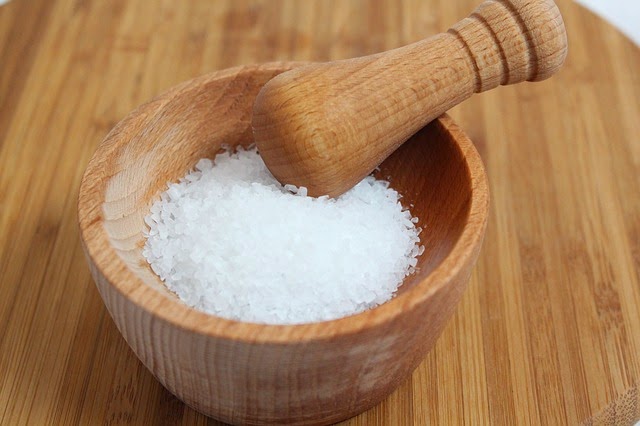
We’ve all been there: A craving for something strong. It’s not sugar — sweet foods sound unappealing. No — we want savory. We want feel-good comfort food. We want salt.
As we explain in this blog post, a salt craving is your body’s way of telling you that you need salt. That’s a pretty basic observation, but someone can need salt for a variety of reasons, which require a variety of different solutions. As you’ll see, some are common (such as mild dehydration or excessive hydration) and some are severe (such as Addison’s disease). Make sure you correctly identify the problem and then you’ll be able to employ the correct solution. Let’s jump in!
Reason 1: You’re dehydrated or over-hydrated:
Think back to the last time you went for a long run in the heat. When you finished, your face and body were coated in a thick, salty layer. You probably didn’t notice until you stepped in the shower and the water forced some of the sweat to trickle down to your lips. Then you noticed something odd. It tasted …. good. So very good. Your brain ignored the fact that you were licking sweat off your face and focused on the fact that you wanted salt, and you wanted it badly.
Salt craving is a symptom that the body’s electrolyte balance is no longer maintained, either due to dehydration or over-hydration. As we explained in our October “Why You Need Salt” blog post, your body uses salt for a variety of important processes, including muscle contraction, blood flow, cell functioning and bone mass. Also, like we pointed out in our January “Ratios” blog post, you need water and salt to stay hydrated. Your body loses both when you sweat, which explains why you crave both after a hard, sweaty workout. Your taste for sweat after your run isn’t weird — it’s your body telling you to replenish. If you’ve been drinking an excess of plain water, then consuming electrolytes with minimal fluid will help rebalance your plasma electrolyte levels. If you are dehydrated due to lack of fluids and salt, then replenishment with plenty of water with lower levels of salt will be most helpful.
What to do about it: While the source of the salt craving is totally normal, it does demonstrate a fluid imbalance. Make sure you’re consuming both water and salt when working out in hot conditions.
When you complete a workout, be sure to consume some type of electrolyte-packed meal. After about an hour, stop and take stock of how your body feels. Are you craving salt? Are you thirsty? Are you hungry? These are your body’s natural cues that will tell you what you need.
Lastly, for an overview about how SaltStick can help stay hydrated, check out our Usage Guide.
Reason 2: Your diet lacks certain minerals:
Like we pointed out in our October “Why You Need Salt” blog post, “salt” is more than just sodium chloride. There are four key salts your body needs to function properly — calcium, magnesium, potassium and, yes, sodium. However, a typical Western diet contains far too much sodium (nearly 3 times too much, according to FitDay), and not enough of the other three. For example, a shocking 57 percent of US adults do not get enough Magnesium, according to the US Department of Agriculture.
What to do about it: While your salt ratios could be incredibly out of balance, your brain may not distinguish between what type of salt you need. No one says “I have a strong calcium craving.” Unfortunately, people usually respond to salt cravings with foods that contain sodium, which may exacerbate the issue, leading to more salt cravings. It’s a never-ending spiral. Stop the spiral by consuming foods that contain all four electrolytes. In other words, consume a balanced diet of plenty of fruits and vegetables. This list will make a great start!
Reason 3: You have a chronic medical condition:
Our January blog post “SaltStick: How Salt Can Help Relieve Chronic Medical Conditions” covered ways in which some chronic medical conditions are caused by deficiencies in salt (migraines, chronic fatigue syndrome) or cause the body to use too much salt (POTS, cystic fibrosis, Addison’s disease). In either case, the body responds by craving salt, which explains why “salt cravings” are symptoms of many chronic conditions.
What to do about it: If your salt cravings are unaccompanied by other symptoms, then you’re probably just dehydrated or lacking key nutrients. However, if you also begin to experience things such as severe fatigue, nausea, intense headaches or weight loss, go to a doctor. Also, if your salt cravings are severe, constant or unexplained, go to a doctor. These conditions (which include Addison’s Disease, Cystic Fibrosis, Chronic Fatigue Syndrome and Postural Orthostatic Tachycardia Syndrome) are not something to mess with, so seek medical advice quickly.
If you determine that you do have one of these chronic medical conditions, SaltStick may help alleviate the symptoms. For a complete overview and usage guidelines, check out our blog post here.
A word of caution:
Be careful when it comes to consuming salt. While a salt craving can indicate that you do need salt to counteract anything from dehydration to low-functioning kidneys, the craving usually will last longer than the time it takes to consume adequate salt. (This situation also applies to eating in general. That’s why it’s a common diet tip is to wait 10 minutes before judging if you’re truly “full.” Your brain doesn’t immediately process the fact that you’ve eaten enough).
What’s the takeaway? It’s just as easy to overconsume salt as it is to underconsume it. Just stay aware of what you’re eating, and be cautious not to run rampant with the salt shaker.